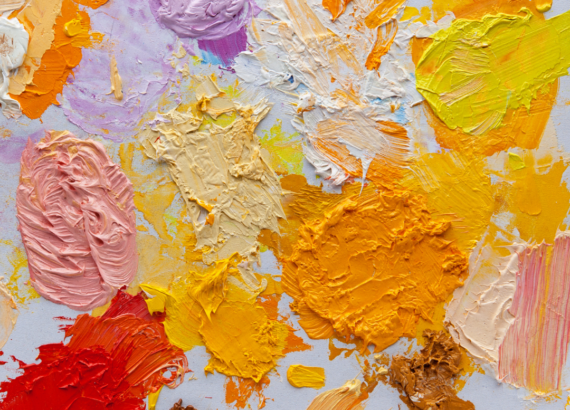Sand Tray Therapy & EMDR with Marshall Lyles (77)

Interviewee Marshall Lyles uses sand tray and poetry alongside EMDR in his work with traumatized children.
Marshall Lyles
- Lives in Austin, Texas
- Is a marriage and family therapist by training
- Also a registered play therapist
- Uses sand tray and poetry as his primary integrations in the EMDR world
- On faculty in an interpersonal neurobiology program
His Experience in Becoming an EMDR Therapist
- Was originally headed toward journalism as a career until an undergraduate advisor noticed his interest in therapy
- Living in Texas, there wasn’t a lot of understanding about being a therapist
- Marshall sometimes felt like a rebel by choosing this path
- Because of a problematic first exposure, he became a little apprehensive about EMDR
- However, seeing positive experiences with a different person eventually turned it around
- “[I had] these amazing consultants who, you know, brought life to it and helped me find my version of how to be really practicing with fidelity, but still understanding that there was a place for creativity” (9:41)
- There isn’t a “Right” or “Wrong” way to practice EMDR
- But unfortunately, it’s oftentimes received that way
- Importantly, we need to integrate other ways of presenting it
Interpersonal Neurobiology and EMDR
- “I think the more we learn about the brain, the more it’s saying: Understand memories. Understand relationships.” (12:53)
- Additionally, we are always learning more in the field of neurobiology and theories are constantly changing
- Sometimes we can rigidly cling to a new theory and not open up to updates
- Though it’s important to grow and adapt
Expressive Arts and EMDR
- Marshall uses the basics of AIP
- “We believe in the power and the wisdom of the human sitting across from us” (19:32)
- Including children
- Importantly, communicate to them that you trust them
- Additionally, starting with an open space without pressure can help them open up without prompting
- Practicing in an expressive way can add some responsibility to the therapist
- Because if you aren’t relying on a worksheet, you have to make sure you are following the same general concepts
- By being attuned to what is naturally unfolding
- Also will introduce bilateral stimulation in the beginning sessions in case it’s needed
- He tries to introduce it within whatever medium the client is drawn to
Working with Adopted Children
- Attachment is important to know
- Because it will let you know what kind of resources a client needs
- Many forms of therapy models are developed with an attachment security bias
- Additionally, with adopted clients, it is assumed that before the trauma there was safety
- But that is not always the case
Client-Therapist Relationship
- This relationship is integral to therapy
- Also from an interpersonal neurobiology perspective, it’s important to feel that safety
- Additionally, it’s important for the therapists themselves to feel loved and worthy before meeting with their clients
- Otherwise, they can’t be relational with their clients
- Marshall emphasizes relationships and the feeling of safety with his clients
- For example, talking about a “stop” signal early on can help with feeling safe
- For adopted clients, a major issue can be disenfranchised grief
Therapy and Disabilities
- Humility is important
- Because there will always be something in your office that feels hard or overwhelming to someone with a disability
- Importantly, notice and accept the discomfort or lack of safety
- “We can really quickly make it about our need to be appreciated instead of their need to be safe” (45.02)
- Also, stay open and flexible
- Poetry is great for this reason- no rules, no form, no punctuation
- All the while establishing a rhythm
Integrating Poetry in Sessions
- Sometimes will call it “lyrics” instead
- Reading poetry can be beneficial to you as a therapist
- Because it’s lighting up the right part of the brain
- Also, there are studies that show the differences between reading prose and poetry
- And clients tend to respond poetically
- “It enhances the processing, I think, to just be engaged in the rhythm of what they’re saying as much as the content about what they’re saying” (50:01)
Transitioning Through the Therapeutic Process
- Marshall doesn’t try to communicate to a client that they are striving for a certain technique or intervention
- It’s important to let go of certainty and increase the capacity for not knowing
- The client will give cues about what they are needing
- Whether it be something more concrete or rhythmic
- Sometimes things lead to a rupture
- But it’s important to welcome it and initiate repair
- Some of the most powerful healing moments can come from a rupture
Trainings and Books
- Can visit his website to learn more about his consultations, writings, and books
- https://www.marshalllyles.com/
Did you know? After full completion of Beyond Healing Institute’s Somatic Integration and Processing training, each participant can receive 21 NBCC hours.
Beyond Healing Center
- Visit our website for all things BHC
- Contact us about retreats and therapy
- Contact us about training and consultation
Beyond Healing Media
- First, listen to our past episodes of NT here
- Then, check out more Beyond Healing podcasts
- Give your support and gain access to exclusive content through Patreon
Interested in supporting a child?
- https://www.patreon.com/BurntOutEducator
- 100% of the proceeds donated to the Burntout Educator will provide therapy for a child in the public school system.
- Not therapy capped at a certain number, but an open-ended relationship with a highly qualified therapist in the BHC network.
Connect with us on social media: Facebook & Instagram
Credits
Executive Directors: Jennifer and Ryan Savage, Melissa Bentinnedi, Bridger Falkenstein
Hosts: Jennifer Savage, Melissa Benintendi, and Bridger Falkenstein
Filmographer: Tyler Wassam
Podcast Producer: Jamie Eggert
Original Music Composers: Bridger Falkenstein and Caleb Boston
Show Notes: Jordan Murray-Harper





